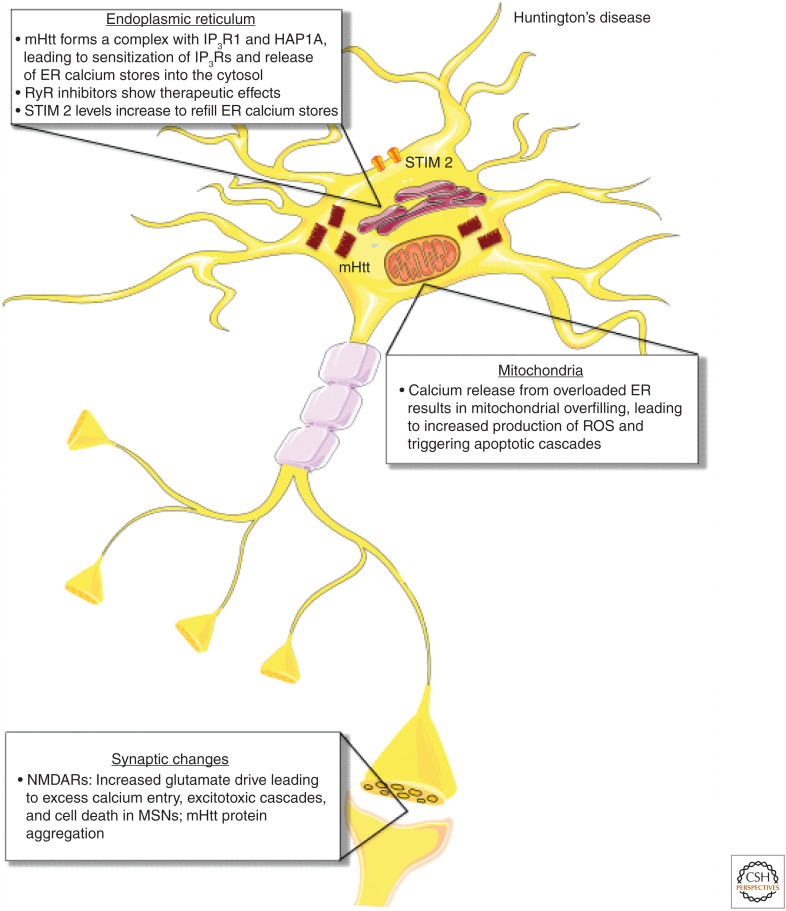Figure 2.
Calcium-handling defects in Huntington's disease (HD). In HD, the mHtt protein forms a complex with inositol-14,5-trisphosphate receptor 1 (IP3R1) and Huntingtin-associated protein 1 (HAP1A), leading to sensitization of IP3Rs and release of ER calcium stores into the cytosol. RyR inhibitors also show therapeutic effects in HD, suggesting that RyR-mediated calcium release is involved in neurodegeneration. As ER calcium stores are released and become depleted, stromal interaction molecule 2 (STIM2) increases to refill ER calcium stores by traveling to the plasma membrane and recruiting ORAI channels to allow calcium entry. Much like AD, calcium release from the overloaded ER results in mitochondrial overfilling, which in turn leads to increased production of reactive oxygen species (ROS) and triggers apoptotic cascades. At the synapse, increased glutamate drive at N-methyl-d-aspartate receptors (NMDARs) leads to excess calcium entry, excitotoxic death in medium spiny neurons (MSNs), and mHtt protein aggregation.

